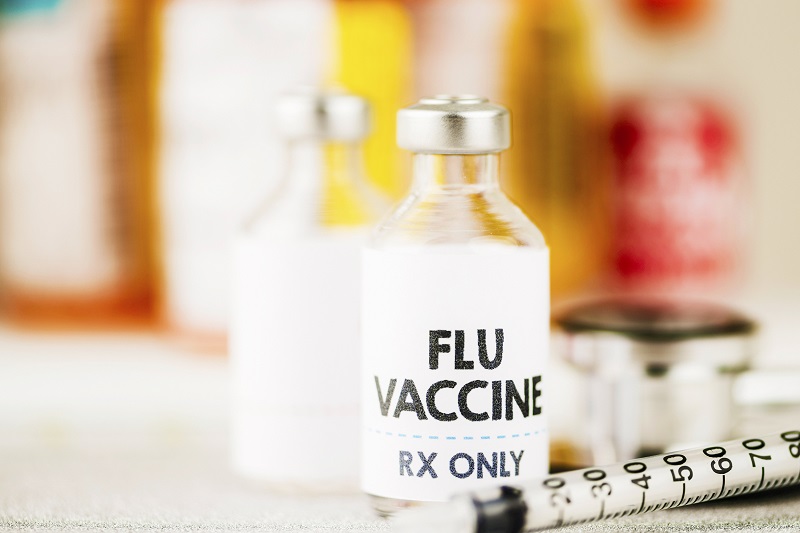With the U.S. 2019-2020 flu season well underway, a new study reports that more than half of American adults have not yet had a flu shot – and more than 40 percent say they won’t sanction a flu shot for their children.1
The stats, based on a nationally representative sample of 1,020 English-speaking adults age 18 and over, were released on December 3, 2019. Data was collected using an Omnibus survey of the AmeriSpeak® Panel, the probability-based panel of NORC at the University of Chicago – charged with conducting the Centers for Disease Control and Prevention’s National Immunization Survey since 2005.
Of those surveyed:
- 44 percent said they had been vaccinated against the flu.
- 37 percent said they do not intend to get the flu shot this year.
- 18 percent said they intend to get a flu shot but haven’t yet.
There’s time to sway anti-vaxxers and encourage stragglers to get their flu shot, according to the Centers for Disease Control and Prevention (CDC). “Vaccination can still be beneficial as long as flu viruses are circulating.”2
Just the Facts
OK. Yup. Fair enough. We know you know everything medgoo is about to report. But since your professional time is already spread thin as Katz Deli’s shaved pastrami on an onion roll, we’re gonna hand you the necessary info to give your pro-flu vaccine appeal a shot in the arm.
1.7 million to 2.5 million Americans3, 4
The number of influenza cases reported by the CDC within only two months – October 1 to November 30, 2019.
Between these two months, October and November, 2019, the flu resulted in: 3, 4
- 800,000 to 1.2 million medical visits
- 16,000 to 29,000 hospitalizations
- 910 to 2,400 deaths
Despite these numbers, many Americans – more than half according to the NORC survey – dismissed their flu shot this year. Why? The American Academy of Family Physicians (AAFP) suggests it’s most often one of two reasons. Some patients fall into the “chronic no” category. Others, however, are in what AAFP calls the “undifferentiated no” group, and it’s not clear why they say no.5 The window may be ajar for these folks.
Let’s Review
This year’s “undifferentiated no’s” may be stuck in 2018-2019, which brought a milder flu season. And last year did indeed seem tame considering that the 2017-2018 flu term was our deadliest season in more than forty years.6
However, the 2018-2019 flu season was nothing to sneeze at, according to National Center for Health Statistics. The number of people hospitalized due to flu complications came in at 647,000, and deaths hovered around 61,200 people. These numbers, although less extreme than 2017-2018, sit at or above the epidemic threshold. In addition, last year came with an unusual twist. Flu season struck in two waves, with the first peaking at the end of December and the second peaking in early March.7
A Few Quick Tips
While your hands may be tied with anti-vaxxers, there are ways to nudge the 18 percent who claim they intend to get a flu shot but can’t find the time.
An AAFP study found that reminder texts are an effective, low-cost way to increase flu shots. Researchers saw that texts – which include a phone number to call for an appointment – increased positive responses. Bottom line, results brought an additional immunization for every 29 texts sent.8
Patients might be interested in a small study conducted in Japan, which strongly suggests that our obsession with hand sanitizers creates a false sense of security and does not make a flu shot obsolete. As the study reports, mucus from patients with influenza A remains infectious even after slathering your hands with an alcohol-based hand sanitizer. The study went on to say that a good old fashioned hand washing with antiseptic soap produced far better results by rapidly inactivating influenza A virus in mucus.9
It may help to share with patients what you already know – a flu shot is no miracle. Patients may still get the flu. That said, a 2018 study found that a flu bout after being vaccinated tends to be less severe. The study showed that among adults hospitalized with flu, vaccinated patients were 59 percent less likely to be admitted to the ICU than those who had not been vaccinated. In addition, vaccinated patients who were admitted to the ICU with the flu spent on average 4 fewer days in the hospital than those who were not vaccinated.10
You might say that this influenza update isn’t particularly sticky, gooey, or laced with OMG statements – and you’re right. It’s not. But it’s one of those evergreen stories that deserves repeating until every one of your patients is properly vaccinated. As the CDC tells us, year after year, “Flu vaccination is the best way to reduce the risk from flu and its potentially serious complications.”11
Resources
2) Misconceptions about Seasonal Flu and Flu Vaccines. (2019, September 25).
3) Weekly U.S. Influenza Surveillance Report. (2019, December 6).
4) 2019-2020 U.S. Flu Season: Preliminary Burden Estimates. (2019, December 6).
6) Stobbe, M. (2018, September 26). APNewsBreak: 80,000 people died of flu last winter in US.
7) Foster, P. L. (2019, June 6). This year the flu came in two waves. Here’s why.
8) Editors, F. P. M. (2018, December 12). Help patients remember to get their flu shot.
11) Weekly U.S. Influenza Surveillance Report. (2019, December 6).







